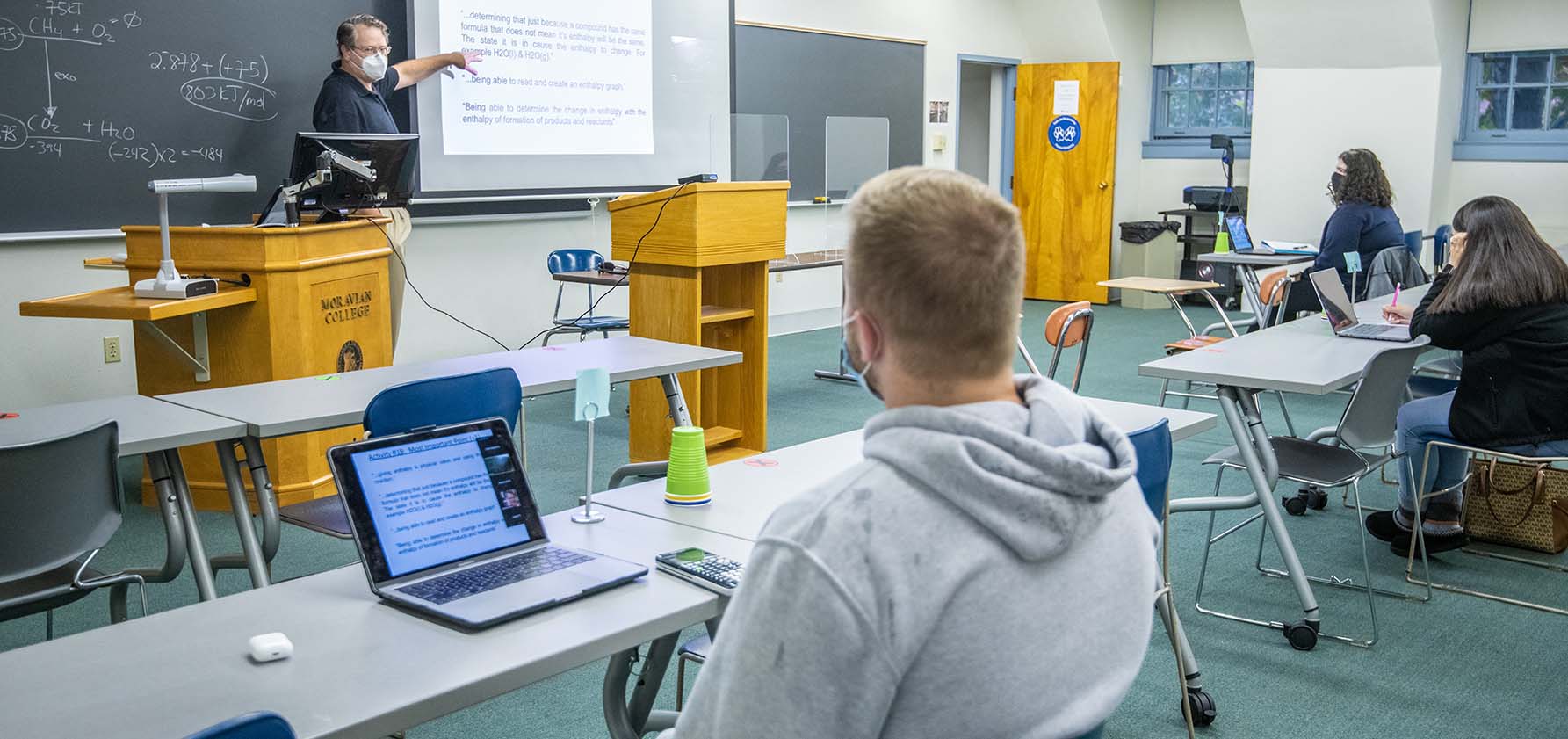
Interest in general chemistry has exploded in recent years at Moravian College, swelling lectures with so many students that keeping them optimally engaged became a challenge. To excite student engagement and learning, associate professors Shari and Stephen Dunham replaced one of the three weekly lectures with small active-learning sessions in which teams of four students collaborate over problems in chemistry. The plan worked—increasing student participation and learning.
Then the pandemic hit and scattered students and faculty outside classrooms for remote learning. Undaunted by this dramatic environmental shift in teaching, the Dunhams looked to the college’s array of digital tools to recreate their active-learning sessions through Zoom.
Consider a typical session from the fall semester. In a large classroom on the third floor of Memorial Hall, five students, with laptops in front of them, sit physically distanced at desks. The remaining students join the class remotely on Zoom. After a short warmup problem, teams of four go to Zoom breakout rooms to work together on a set of chemistry problems. All students must participate in the problem solving but each has a unique role:

The speaker: This team member is physically present in the classroom and has these responsibilities: handles any physical equipment; listens to the comments of all team members so as to be able to represent the views and conclusions of the majority; and presents the team’s solutions to the class. The speaker also controls the “Ask for Help” button in Zoom for requesting help from the instructor.
The manager: He or she keeps the team on task and ensures that all members participate in problem-solving and understand the progress of the work.
The recorder: This team member considers the remarks of everyone in the group and records the final agreed-upon solutions, which are submitted at the end of the session.
The reflector: He or she identifies team problem-solving strategies, analyzes what worked, what didn’t work, and what the team learned and submits a reflection on Canvas. The best reflection is presented at the beginning of the next active-learning session.
In the breakout rooms, the learning activity begins. One student shares their screen with the group. On it are problems or questions that tackle a specific topic in chemistry. In this session, students are working on questions that address enthalpy in chemical reactions. The team considers the first question, talking it through and using their iPads to write down their work on a PDF downloaded from Canvas.
As students pore over a problem, Dunham moves around the classroom from team to team to answer questions and check in on progress using Zoom. Students explain their work, and if questions arise, Dunham leads them through the problem-solving.
When a team arrives at their final answer, the Recorder submits one PDF showing their work to Canvas, where later it will be graded. (No paper is changing hands.) Wrapping up the session, students discuss what went well and where they struggled. The Reflector writes a team reflection and uploads it to Canvas. The document provides valuable feedback on student learning.
Reflecting on the active-learning sessions at the end of the fall semester, one student remarked that completing the activities helped them apply what they learned in the lectures and that despite not being in person, the groups worked together effectively. Another enjoyed working with the same team throughout the semester because they achieved a comfort level that made it easier to share ideas. “I learned a lot from the students in my group.”
When Dunham compared data on student learning from the Zoom sessions to pre-pandemic in-person sessions, the outcomes were the same.
Goal achieved.